1 of 21
Downloaded 28 times

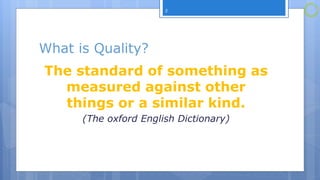
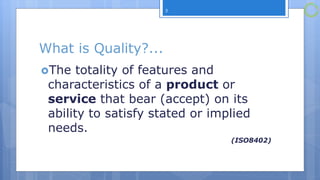
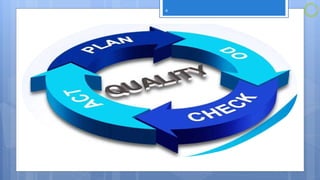
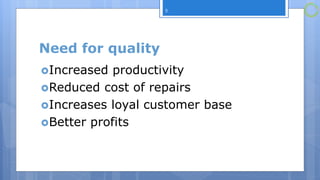

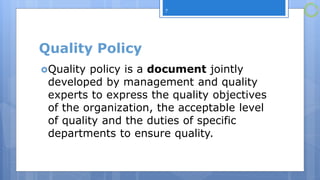

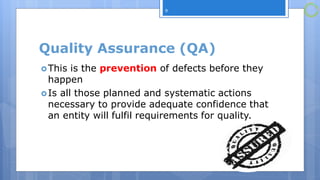
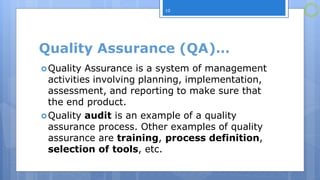

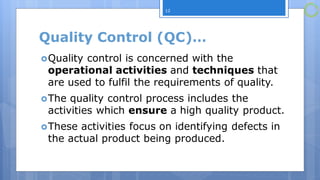
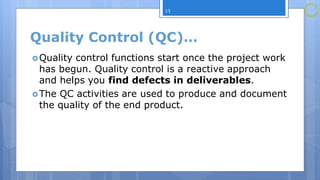
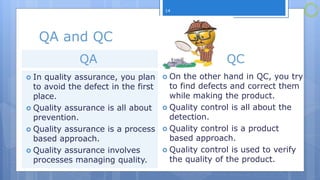
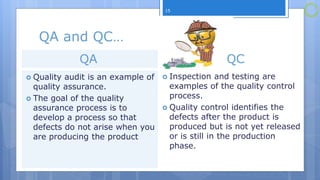
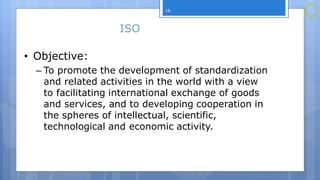
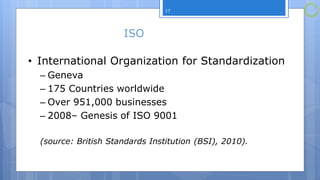
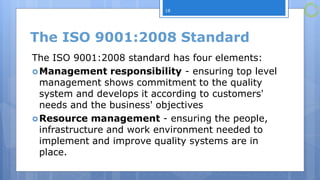

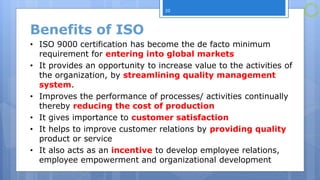

Ad
Recommended
ZS - 0104 - Komandant Mark - NESTANAK SVETOG STITA
ZS - 0104 - Komandant Mark - NESTANAK SVETOG STITAStripovizijacom
?
ZS - 0104 - Komandant Mark - NESTANAK SVETOG STITADBMS Unit - 1 Database System Architecture
DBMS Unit - 1 Database System ArchitectureGyanmanjari Institute Of Technology
?
Database system architecture: Data Abstraction, Data Independence, Data Definition Language (DDL), Data Manipulation Language (DML).021. ZAGOR - TRAPERI IZ FORT EROUA
021. ZAGOR - TRAPERI IZ FORT EROUATompa *
?
šŌĘ▌╬─ĄĄŽĻŽĖĮķ╔▄┴╦─│Ė÷ų„╠ŌĄ─▒│Š░ĪóŽųū┤ęį╝░╬┤└┤Ą─╠¶šĮ║═╗·ė÷ĪŻ═©╣²╩²Š▌Ęų╬÷Ż¼Įę╩Š┴╦╣ž╝³Ū„╩Ų║═ė░Žņę“╦žĪŻ┤╦═ŌŻ¼╠ß╣®┴╦ŽÓ╣žĮ©ęķęįė”ČįŪ▒į┌╬╩╠ŌĪŻMonthly Khazina-e-Ruhaniyaat July'23 (Vol.14, Issue 3)
Monthly Khazina-e-Ruhaniyaat July'23 (Vol.14, Issue 3)Darul Amal Chishtia
?
3rd issue of Volume 14. A magazine in urdu language mainly based on spiritual treatment and learning. Many topics on ISLAM, SUFISM, SOCIAL PROBLEMS, SELF HELP, PSYCHOLOGY, HEALTH, SPIRITUAL TREATMENT, Ruqya etc. A very useful magazine for everyone.DBMS Unit - 2 - Data Models
DBMS Unit - 2 - Data ModelsGyanmanjari Institute Of Technology
?
Entity-relationship model, network model, relational and object oriented data models, integrity constraints, data manipulation operations.Certificate Security Guard
Certificate Security GuardJulian Vander Auwera
?
Ė├╬─ĄĄ╬¬ g4s training services n.v. Ą─╣½╦Šą┼ŽóŻ¼░³└©Ųõūó▓ß║┼║═Ųõ╦¹ųžę¬╩²Š▌ĪŻ╬─ĄĄ─┌╚▌Ė┤įėŻ¼┐╔─▄░³║¼ČÓĖ÷╩²Š▌ūųČ╬ĪŻū▄╠Õ└┤╦ĄŻ¼╬─ĄĄ╩¶ė┌╣½╦Šūó▓ß╝░ŽÓ╣žą┼ŽóĄ─ĘČ│ļĪŻISO 9001-2015 Lead Auditor Soved Specimen question
ISO 9001-2015 Lead Auditor Soved Specimen question HarshVardhan856629
?
Solved Specimen Question Paper for people appearing for ISO 9001-2015 Lead Auditor Examination.WD - Unit - 3 - Java Script
WD - Unit - 3 - Java ScriptGyanmanjari Institute Of Technology
?
Javascript Syntax, Types of Javascript, variables, arrays, functions, conditions, loops, Pop up boxes, Javascript objects and DOM, Javascript inbuilt functions, Javascript validations, Regular expressions, Event handling with Javascript, Callbacks in Javascript, Function as arguments in Javascript, Object concepts in JavascriptMonthly Khazina-e-Ruhaniyaat October'22 (Vol.13, Issue 6)
Monthly Khazina-e-Ruhaniyaat October'22 (Vol.13, Issue 6)Darul Amal Chishtia
?
6th issue of Volume 13. Nurani Tawezat Number is 24th Special Number is based on Nurani, In which spiritual treatment is done of Bandish, Jadu, Jinnat, Mujjarab Aamaal, Nazr-e-Bad, Dushman, Shadi wa Nikah, Zuban Bandi, Judai & Mohabbat. A very useful Special Number for everyone.Networking in java, Advanced programming
Networking in java, Advanced programmingGera Paulos
?
This document provides an overview of networking concepts in Java. It discusses how Java makes network programming easier than C/C++. The java.net package contains classes and interfaces that handle low-level communication details. It supports both TCP and UDP network protocols. The document demonstrates how to create servers and sockets in Java to establish connections between clients and servers for communication. It also shows how to manipulate URLs to access resources on the web and process URL components.Remote Method Invocation, Advanced programming
Remote Method Invocation, Advanced programmingGera Paulos
?
This document provides an overview of Remote Method Invocation (RMI) in Java. It discusses the architecture of RMI applications including stubs, skeletons, and the transport layer. It describes how RMI allows objects in one JVM to invoke methods on objects in another JVM, enabling the development of distributed applications. The document outlines the steps to implement RMI, including creating remote interfaces, implementation classes, the server, and client. It also discusses marshalling, unmarshalling, and the role of the RMI registry.More Related Content
What's hot (20)
021. ZAGOR - TRAPERI IZ FORT EROUA
021. ZAGOR - TRAPERI IZ FORT EROUATompa *
?
šŌĘ▌╬─ĄĄŽĻŽĖĮķ╔▄┴╦─│Ė÷ų„╠ŌĄ─▒│Š░ĪóŽųū┤ęį╝░╬┤└┤Ą─╠¶šĮ║═╗·ė÷ĪŻ═©╣²╩²Š▌Ęų╬÷Ż¼Įę╩Š┴╦╣ž╝³Ū„╩Ų║═ė░Žņę“╦žĪŻ┤╦═ŌŻ¼╠ß╣®┴╦ŽÓ╣žĮ©ęķęįė”ČįŪ▒į┌╬╩╠ŌĪŻMonthly Khazina-e-Ruhaniyaat July'23 (Vol.14, Issue 3)
Monthly Khazina-e-Ruhaniyaat July'23 (Vol.14, Issue 3)Darul Amal Chishtia
?
3rd issue of Volume 14. A magazine in urdu language mainly based on spiritual treatment and learning. Many topics on ISLAM, SUFISM, SOCIAL PROBLEMS, SELF HELP, PSYCHOLOGY, HEALTH, SPIRITUAL TREATMENT, Ruqya etc. A very useful magazine for everyone.DBMS Unit - 2 - Data Models
DBMS Unit - 2 - Data ModelsGyanmanjari Institute Of Technology
?
Entity-relationship model, network model, relational and object oriented data models, integrity constraints, data manipulation operations.Certificate Security Guard
Certificate Security GuardJulian Vander Auwera
?
Ė├╬─ĄĄ╬¬ g4s training services n.v. Ą─╣½╦Šą┼ŽóŻ¼░³└©Ųõūó▓ß║┼║═Ųõ╦¹ųžę¬╩²Š▌ĪŻ╬─ĄĄ─┌╚▌Ė┤įėŻ¼┐╔─▄░³║¼ČÓĖ÷╩²Š▌ūųČ╬ĪŻū▄╠Õ└┤╦ĄŻ¼╬─ĄĄ╩¶ė┌╣½╦Šūó▓ß╝░ŽÓ╣žą┼ŽóĄ─ĘČ│ļĪŻISO 9001-2015 Lead Auditor Soved Specimen question
ISO 9001-2015 Lead Auditor Soved Specimen question HarshVardhan856629
?
Solved Specimen Question Paper for people appearing for ISO 9001-2015 Lead Auditor Examination.WD - Unit - 3 - Java Script
WD - Unit - 3 - Java ScriptGyanmanjari Institute Of Technology
?
Javascript Syntax, Types of Javascript, variables, arrays, functions, conditions, loops, Pop up boxes, Javascript objects and DOM, Javascript inbuilt functions, Javascript validations, Regular expressions, Event handling with Javascript, Callbacks in Javascript, Function as arguments in Javascript, Object concepts in JavascriptMonthly Khazina-e-Ruhaniyaat October'22 (Vol.13, Issue 6)
Monthly Khazina-e-Ruhaniyaat October'22 (Vol.13, Issue 6)Darul Amal Chishtia
?
6th issue of Volume 13. Nurani Tawezat Number is 24th Special Number is based on Nurani, In which spiritual treatment is done of Bandish, Jadu, Jinnat, Mujjarab Aamaal, Nazr-e-Bad, Dushman, Shadi wa Nikah, Zuban Bandi, Judai & Mohabbat. A very useful Special Number for everyone.More from Gera Paulos (20)
Networking in java, Advanced programming
Networking in java, Advanced programmingGera Paulos
?
This document provides an overview of networking concepts in Java. It discusses how Java makes network programming easier than C/C++. The java.net package contains classes and interfaces that handle low-level communication details. It supports both TCP and UDP network protocols. The document demonstrates how to create servers and sockets in Java to establish connections between clients and servers for communication. It also shows how to manipulate URLs to access resources on the web and process URL components.Remote Method Invocation, Advanced programming
Remote Method Invocation, Advanced programmingGera Paulos
?
This document provides an overview of Remote Method Invocation (RMI) in Java. It discusses the architecture of RMI applications including stubs, skeletons, and the transport layer. It describes how RMI allows objects in one JVM to invoke methods on objects in another JVM, enabling the development of distributed applications. The document outlines the steps to implement RMI, including creating remote interfaces, implementation classes, the server, and client. It also discusses marshalling, unmarshalling, and the role of the RMI registry.Multi Threading Concept (Advanced programming)
Multi Threading Concept (Advanced programming)Gera Paulos
?
Multi Threading Concept, Advanced programming ch3Java Database Connectivity (Advanced programming)
Java Database Connectivity (Advanced programming)Gera Paulos
?
This document provides an overview of Java Database Connectivity (JDBC). It discusses how JDBC allows Java programs to connect to and interact with databases. It describes the key components of JDBC, including the JDBC API, driver manager, drivers, and JDBC-ODBC bridge. It also covers basic SQL queries and how to install and set up JDBC.Servlets as introduction (Advanced programming)
Servlets as introduction (Advanced programming)Gera Paulos
?
Servlets allow servers to generate dynamic web page content. Servlets are Java programs that run on web servers to respond to client HTTP requests by generating documents like HTML pages. Servlets extend server functionality beyond static pages by enabling content generation, secure access, database interaction, and session tracking for each client. The servlet container receives requests and directs them to servlets, which process requests and return responses like HTML documents to clients. Servlets offer advantages over CGI like better performance since they run within the server address space rather than as separate processes.Advanced programming ch2
Advanced programming ch2Gera Paulos
?
This document provides an overview of streams and file input/output (I/O) in Java. It discusses different types of streams like input streams, output streams, byte streams, text streams, and standard streams. It also covers FileInputStream, FileOutputStream, FileReader, FileWriter, and how to use streams to read from and write to files and directories. Examples are provided demonstrating how to copy files, read from the keyboard, and use byte arrays as input streams.Advanced programming ch1
Advanced programming ch1Gera Paulos
?
The document discusses features of the Java programming language and the Abstract Window Toolkit (AWT) GUI library. It provides details on Java being simple, platform independent, architecturally neutral, portable, multithreaded, networked, distributed, high-performance, interpreted, dynamic, secured, robust, and an object-oriented programming language. It then explains key AWT concepts like components, windows, frames, and how to create frames by setting their size and visibility.Image restoration and enhancement #2
Image restoration and enhancement #2 Gera Paulos
?
The document discusses the fundamental steps in digital image processing, which include image acquisition, restoration, enhancement, representation and description, segmentation, recognition, morphological processing, color processing, compression, and problem domains. It provides examples and brief explanations of each step. For example, it states that image restoration aims to recover an degraded image using knowledge of the degradation process, while enhancement manipulates an image to be more suitable for a specific application based on human preferences. The document also presents a model of the image degradation and restoration process.Implement maintenance procedures
Implement maintenance proceduresGera Paulos
?
The document discusses the benefits of exercise for mental health. Regular physical activity can help reduce anxiety and depression and improve mood and cognitive function. Exercise causes chemical changes in the brain that may help protect against mental illness and improve symptoms.Care for network and computer hardware
Care for network and computer hardwareGera Paulos
?
The document discusses the history and development of artificial intelligence over the past 70 years. It outlines some of the key milestones in AI research from the early work in the 1950s to modern advances in deep learning. While progress has been significant, fully general human-level AI remains an ongoing challenge that researchers continue working to achieve.Monitoring implementation of work plan
Monitoring implementation of work planGera Paulos
?
Monitoring implementation of work plan (activities)Provide first level remote help desk support
Provide first level remote help desk supportGera Paulos
?
The document provides guidance on how to provide detailed client support for a technical problem by outlining 7 key steps:
1. Determine the nature of the problem and describe what is lacking to solve it.
2. Research and determine a possible solution, listing any required hardware, software, or training.
3. Discuss the suggested solution with others and seek approval to implement it.
4. Implement the approved solution.
5. Create documentation about the new system for the client.
6. Provide face-to-face instruction to the client based on the documentation.
7. Create a feedback form and seek client feedback on the instruction to identify areas for improvement.Configuring and administrate server
Configuring and administrate serverGera Paulos
?
The document provides information about configuring and administering a server. It discusses server specifications, compatibility, configuration and testing. It defines what a server and network operating system are. The document outlines different server types including file, print, application, mail, terminal and remote access servers. It also covers client support, communication, users and groups, Windows server editions, UNIX/Linux servers, network computer groups, and items that need to be configured on a server like services, authentication, and authorization.Conduct / facilitate user training
Conduct / facilitate user trainingGera Paulos
?
This document outlines the process for identifying training needs within an organization. It discusses different methods for determining specific training needs, including observation, interviews, questionnaires, job descriptions, and difficulty analysis. Observation involves directly evaluating an employee's performance, while interviews can be conducted using interview guides to ensure consistent data collection. Questionnaires allow employees to provide feedback in writing. Job descriptions and difficulty analysis examine job responsibilities and tasks that cause the most problems to determine where training could help. The goal of needs analysis is to identify performance gaps and determine if training is the appropriate solution.Ad
Recently uploaded (20)
" How to survive with 1 billion vectors and not sell a kidney: our low-cost c...
" How to survive with 1 billion vectors and not sell a kidney: our low-cost c...Fwdays
?
Let's talk about our history. How we started the project with a small vector database of less than 2 million records. Later, we received a request for +100 million records, then another +100... And so gradually we reached almost 1 billion. Standard tools were quickly running out of steam - we were running into performance, index size, and very limited resources. After a long series of trials and errors, we built our own low-cost cluster, which today stably processes thousands of queries to more than 1B vectors.PyCon SG 25 - Firecracker Made Easy with Python.pdf
PyCon SG 25 - Firecracker Made Easy with Python.pdfMuhammad Yuga Nugraha
?
Explore the ease of managing Firecracker microVM with the firecracker-python. In this session, I will introduce the basics of Firecracker microVM and demonstrate how this custom SDK facilitates microVM operations easily. We will delve into the design and development process behind the SDK, providing a behind-the-scenes look at its creation and features. While traditional Firecracker SDKs were primarily available in Go, this module brings a simplicity of Python to the table.9-1-1 Addressing: End-to-End Automation Using FME
9-1-1 Addressing: End-to-End Automation Using FMESafe Software
?
This session will cover a common use case for local and state/provincial governments who create and/or maintain their 9-1-1 addressing data, particularly address points and road centerlines. In this session, you'll learn how FME has helped Shelby County 9-1-1 (TN) automate the 9-1-1 addressing process; including automatically assigning attributes from disparate sources, on-the-fly QAQC of said data, and reporting. The FME logic that this presentation will cover includes: Table joins using attributes and geometry, Looping in custom transformers, Working with lists and Change detection.UserCon Belgium: Honey, VMware increased my bill
UserCon Belgium: Honey, VMware increased my billstijn40
?
VMwareĪ»s pricing changes have forced organizations to rethink their datacenter cost management strategies. While FinOps is commonly associated with cloud environments, the FinOps Foundation has recently expanded its framework to include ScopesĪ¬and Datacenter is now officially part of the equation. In this session, weĪ»ll map the FinOps Framework to a VMware-based datacenter, focusing on cost visibility, optimization, and automation. YouĪ»ll learn how to track costs more effectively, rightsize workloads, optimize licensing, and drive efficiencyĪ¬all without migrating to the cloud. WeĪ»ll also explore how to align IT teams, finance, and leadership around cost-aware decision-making for on-prem environments. If your VMware bill keeps increasing and you need a new approach to cost management, this session is for you!Using the SQLExecutor for Data Quality Management: aka One man's love for the...
Using the SQLExecutor for Data Quality Management: aka One man's love for the...Safe Software
?
The SQLExecutor is one of FMEĪ»s most powerful and flexible transformers. Pivvot maintains a robust internal metadata hierarchy used to support ingestion and curation of thousands of external data sources that must be managed for quality before entering our platform. By using the SQLExecutor, Pivvot can efficiently detect problems and perform analysis before data is extracted from our staging environment, removing the need for rollbacks or cycles waisted on a failed job. This presentation will walk through three distinct examples of how Pivvot uses the SQLExecutor to engage its metadata hierarchy and integrate with its Data Quality Management workflows efficiently and within the source postgres database. Spatial Validation ©CValidating spatial prerequisites before entering a production environment. Reference Data Validation - Dynamically validate domain-ed columns across any table and multiple columns per table. Practical De-duplication - Removing identical or near-identical well point locations from two distinct source datasets in the same table.10 Key Challenges for AI within the EU Data Protection Framework.pdf
10 Key Challenges for AI within the EU Data Protection Framework.pdfPriyanka Aash
?
10 Key Challenges for AI within the EU Data Protection FrameworkCracking the Code - Unveiling Synergies Between Open Source Security and AI.pdf
Cracking the Code - Unveiling Synergies Between Open Source Security and AI.pdfPriyanka Aash
?
Cracking the Code - Unveiling Synergies Between Open Source Security and AIThe Growing Value and Application of FME & GenAI
The Growing Value and Application of FME & GenAISafe Software
?
With the cost of using Generative AI services dropping exponentially and the array of available models continually expanding, integrating AI into FME workflows has become inexpensive, accessible and effective. This presentation explores how GenAI within FME can cost-effectively transform data workflows by automating data extraction, validation, classification and augmentation tasks. WeĪ»ll discuss how FMEĪ»s no-code flexibility enables users to combine Generative AI and Computer Vision tools that create efficient workflows tailored to specific challenges. Using recent practical examples, weĪ»ll demonstrate how these integrations can simplify complex tasks, save time and enhance data quality.Techniques for Automatic Device Identification and Network Assignment.pdf
Techniques for Automatic Device Identification and Network Assignment.pdfPriyanka Aash
?
Techniques for Automatic Device Identification and Network AssignmentSecuring Account Lifecycles in the Age of Deepfakes.pptx
Securing Account Lifecycles in the Age of Deepfakes.pptxFIDO Alliance
?
Securing Account Lifecycles in the Age of DeepfakesLessons Learned from Developing Secure AI Workflows.pdf
Lessons Learned from Developing Secure AI Workflows.pdfPriyanka Aash
?
Lessons Learned from Developing Secure AI WorkflowsRaman Bhaumik - Passionate Tech Enthusiast
Raman Bhaumik - Passionate Tech EnthusiastRaman Bhaumik
?
A Junior Software Developer with a flair for innovation, Raman Bhaumik excels in delivering scalable web solutions. With three years of experience and a solid foundation in Java, Python, JavaScript, and SQL, she has streamlined task tracking by 20% and improved application stability.GenAI Opportunities and Challenges - Where 370 Enterprises Are Focusing Now.pdf
GenAI Opportunities and Challenges - Where 370 Enterprises Are Focusing Now.pdfPriyanka Aash
?
GenAI Opportunities and Challenges - Where 370 Enterprises Are Focusing NowWenn alles versagt - IBM Tape sch©╣tzt, was z?hlt! Und besonders mit dem neust...
Wenn alles versagt - IBM Tape sch©╣tzt, was z?hlt! Und besonders mit dem neust...Josef Weingand
?
IBM LTO10Database Benchmarking for Performance Masterclass: Session 2 - Data Modeling ...
Database Benchmarking for Performance Masterclass: Session 2 - Data Modeling ...ScyllaDB
?
Specific best practices and pitfalls for benchmarking popular high-performance databases.Quantum AI Discoveries: Fractal Patterns Consciousness and Cyclical Universes
Quantum AI Discoveries: Fractal Patterns Consciousness and Cyclical UniversesSaikat Basu
?
Embark on a cosmic journey exploring the intersection of quantum
computing, consciousness, and ancient wisdom. Together we'll uncover the
recursive patterns that bind our reality.cnc-processing-centers-centateq-p-110-en.pdf
cnc-processing-centers-centateq-p-110-en.pdfAmirStern2
?
???? ??????? ??????? ??? 3/4/5 ?????, ?? 22 ?????? ???? ?? ?? ???????? ?????? ???????.???? ??? ????? ???? ????? ??? ??? ?????? ???? ??????/?????/??????/??????/????? ????..
????? ???? ?????? ????? ????? ???????? ?????? ?????: ????? ????, ?????, ?????, ?????? ????.Ad